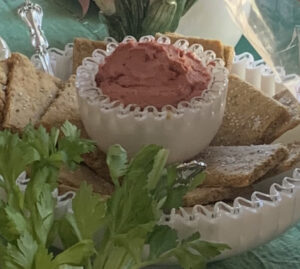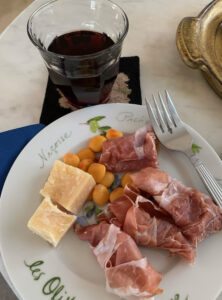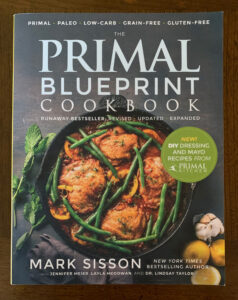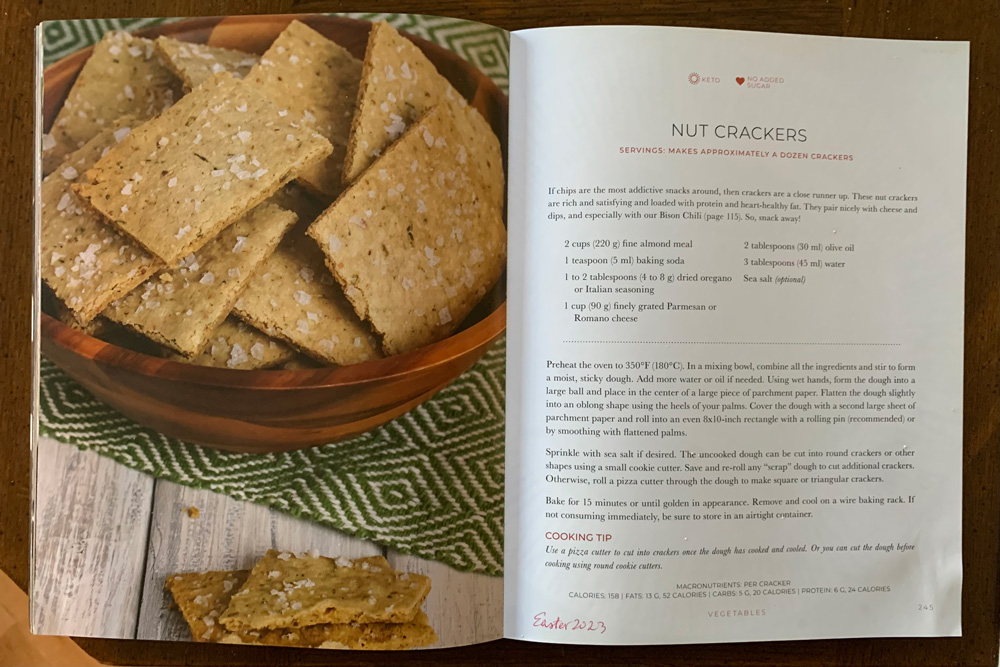Everyone I know is looking for solace, hope and a tasty snack. – Maira Kalman
Should we or shouldn’t we snack? There are mixed opinions on this topic. We often snack to satisfy hunger, responding to food availability and social cues. The word snacking entered the lexicon in the 1920s when it was first referenced in the Oxford English Dictionary as eating between meals. Prior to World War II, most people only ate two or three meals a day.
Snacking became popular in the 1950s. Later, snacking became synonymous with grazing – eating when you feel like it. None of these random acts of eating are really good for you if you are working on weight management or insulin resistance. In fact, every time we eat, our bodies respond by sending a surge of insulin into our bloodstream.
It’s best to limit snacking to healthier choices and to time snacks within an hour or a half-hour before our meals. The strategy is to eat an entire meal, from appetizer to dessert, within a 1½ hour window. This is especially important if you are trying to adopt a Time Restricted Eating (TRE) or Intermittent Fasting (IF) eating pattern. Both TRE and IF operate on the principle that meals are followed by a significant period of time in which no food is ingested. This gives your body an opportunity to recover after a meal, whether the fasting period is 5 hours between lunch and dinner, or 18 hours from dinner to your next meal. Your glucose response after ingesting a meal typically takes place within a two-hour post-prandial period, peaking an hour after the meal. Then, if you have healthy insulin-sensitivity, your glucose should return to pre-meal levels or track with minimal variability.
The strategy here is not how much you eat, but what you eat and how often you eat:
When we eat highly processed carbohydrates, the body increases insulin secretion and suppresses glucagon secretion. This, in turn, signals fat cells to store more calories, leaving fewer calories available to fuel muscles and other metabolically active tissues. The brain perceives that the body isn’t getting enough energy, which, in turn, leads to feelings of hunger. In addition, metabolism may slow down in the body’s attempt to conserve fuel. Thus, we tend to remain hungry, even as we continue to gain excess fat.
For more information, read The carbohydrate-insulin model: a physiological perspective on the obesity pandemic.

Most snack food choices on grocery shelves are loaded with ultra processed foods (UPFs), full of additives, sugar, fructose, and unhealthy oils. Many of these foods cause inflammation and spike blood glucose. Ultra processed foods can be highly addictive and daily snacking can rewire the brain’s reward circuits leading to cravings. An article published last week in Scientific American cites a 2022 meta-analysis which suggests that 20 percent of adults are addicted to food.
Like many people, I like an occasional snack. Occasional is the operative word, because my meals have been, for the most part, low in carbohydrates during my weight transformation. What I eat and when I eat is part of my healthy lifestyle strategy. Our bodies and brain need snacks that offer protein, fiber, and healthy fats, all of which help stabilize blood sugar levels and promote sustained energy.

I like to time my snacks within a half hour before my dinner meal and pre-load with fat and protein. Eaten first, dietary fat and protein often blunt the effects of carbohydrates in the meal. This could be an antipasto with Prosciutto di Parma, Parmigiano Reggiano cheese, and Brami Lupini beans, which have very low carbohydrate content. I also get satiety from raw nuts – usually a quarter-cup (1 ounce or 28 grams) of almonds or walnuts, or half an avocado, several olives, or celery filled with nut butter that has no sugar.
Another great appetizer combination that I like to prepare is Roasted Beet Hummus, a creamy snack featuring beet, chickpeas, tahini, lemon, and garlic, using a simple 10-minute recipe on the Minimalist Baker website. (See below recipe). I serve this flavorful dip with crudité and homemade Nut Crackers, a recipe consisting of almond meal, Italian seasoning, Parmesan or Romano cheese, olive oil, sea salt, baking soda, and water, found in the Primal Blueprint Cookbook, by Mark Sisson. These foods do not trigger my glucose to spike, but rather keep my glucose variability on an even keel.

Levels Health, which I consider a trusted source, has a few good articles that discuss the pitfalls of ingredients in typical snacks and points us to healthier alternatives. Although meat snacks contain far fewer carbs than chips or crackers, they also tend to be highly processed. Read the label, and you’ll likely find artificial ingredients as well as high levels of fat, sugar, and sodium to lengthen shelf-life and enhance texture. One popular beef stick lists ingredients like corn syrup, sodium nitrite, and “mechanically separated chicken.” To find high quality meat snacks such as beef jerky, look for the products listed here.
Snack bars are marketed as energy boosters that deliver nutrition. Some do, but others can wreak havoc on your blood sugar. One popular energy bar contains more sugar and carbs than a candy bar. The best alternative is to make your own with nuts, seeds, protein, and a natural sweetener such as stevia, monkfruit or allulose. You can get additional recipe ideas here.
Remember that satisfaction and healthy snacking can be compatible. It’s not about deprivation, but making choices that are sustainable for the long haul. It’s a lifestyle journey, not a destination!

Minimalist Baker Beet Hummus
Ingredients – US Customary – Metric
- 1 small roasted beet
- 1 15-oz. can cooked chickpeas (mostly drained // 1 can yields ~1 3/4 cup)
- 1 large lemon (zested)
- 1/2 large lemon (juiced)
- 1 healthy pinch salt and black pepper
- 2 large cloves garlic (minced)
- 2 heaping Tbsp tahini
- 1/4 cup extra virgin olive oil
Instructions
- See roasting instructions here.
- Once your beet is cooled and peeled, quarter it and place it in your food processor. Blend until only small bits remain.
- Add remaining ingredients except for olive oil and blend until smooth.
- Drizzle in olive oil as the hummus is mixing.
- Taste and adjust seasonings as needed, adding more salt, lemon juice, or olive oil if needed. If it’s too thick, add a bit of water.
- Roasted Beet Hummus will keep in the fridge for up to a week.
♥ Susan L. Ward
Integrative Nutrition Health Coach
